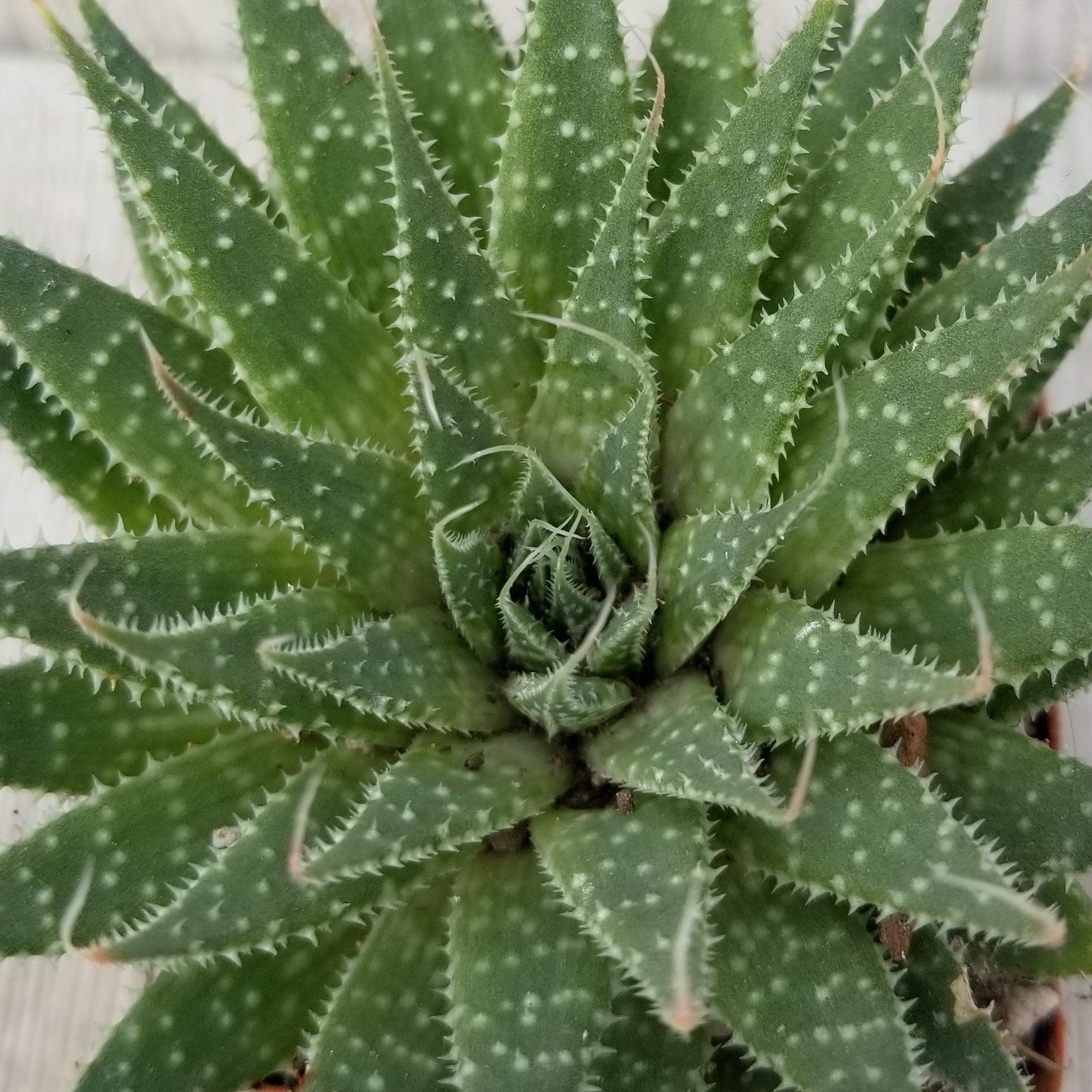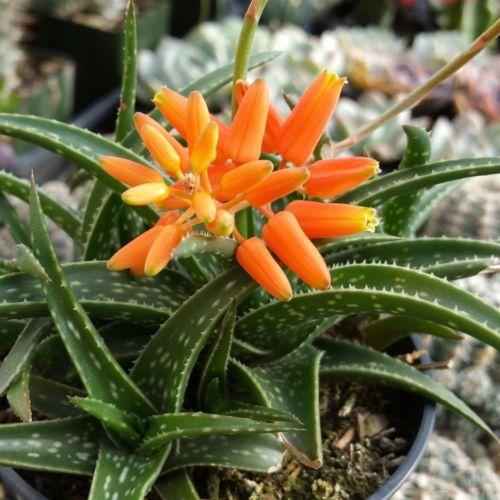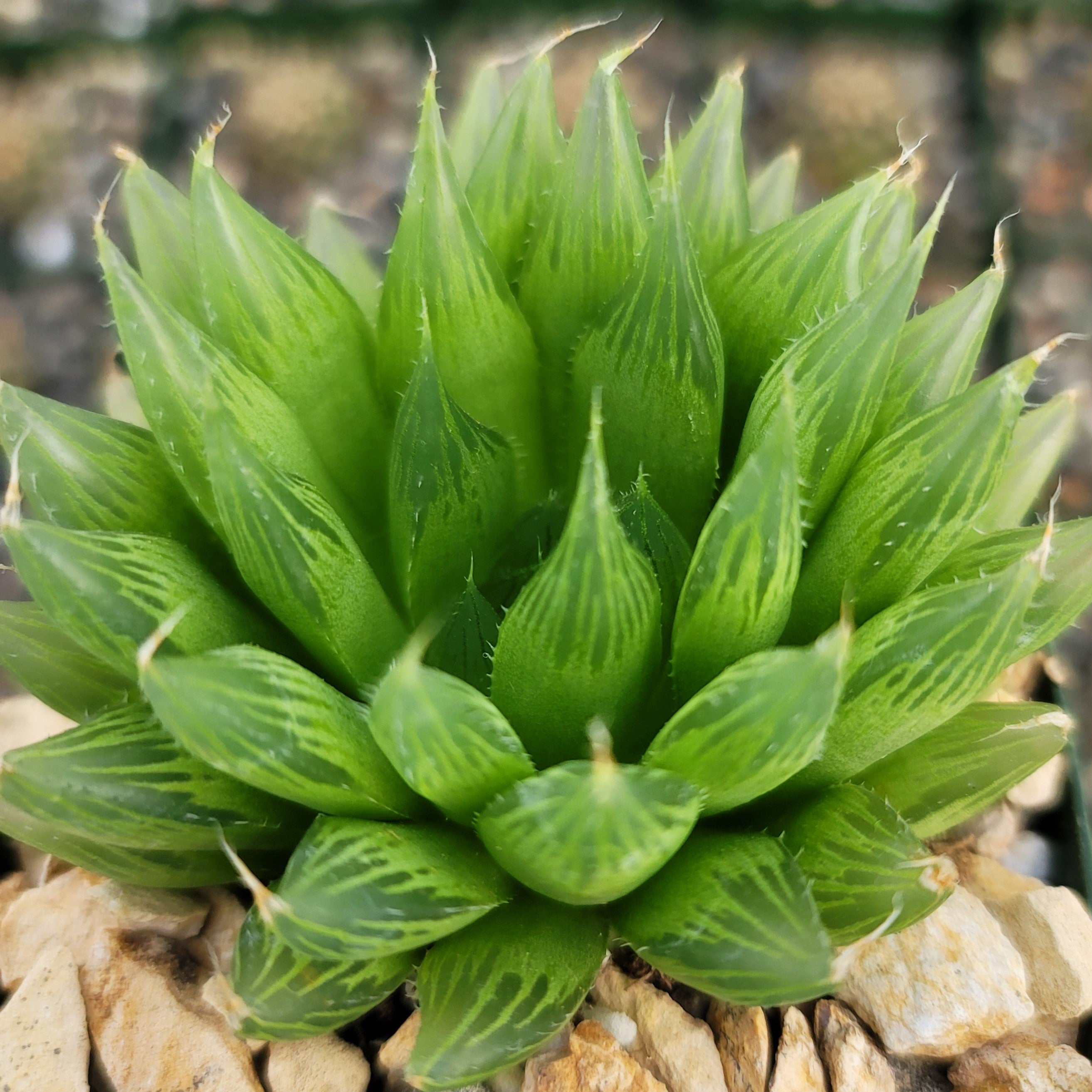How to Take Care of Tillandsia Air Plants – Plus Our Top 10 Favorite Varieties and More...
Updated: January 28, 2025

Air plants are unusual because they do not need soil to grow and can cling to rocks or almost anything. They are also popular houseplants among beginners and expert gardeners for their hardy nature and low-maintenance growth habit. Their unique growth habit means that air plants need special care instructions, especially regarding watering and humidity levels.
In this comprehensive guide from Planet Desert, we'll cover everything you need to know about Tillandsia Air Plant - from its sun exposure needs to how to propagate it by pups and more. So hop on over and let's get started!
What Are Air Plants?

Tillandsia, commonly referred to as air plants, are diverse members of the Bromeliaceae family.
In their natural habitat of tropical and subtropical regions of North and South America, these plants will cling to branches and trunks of trees, shrubs, or plants and other support structures, like rocks or buildings.
While air plants use branches and other plants as support structures to cling to, they do not get their nutrients from the soil or their host plants (making them unique).
Air Plants absorb all their nutrients from the air itself and collect water through specialized cells known as trichomes.
Air Plant Fun Facts
- Tillandsias are epiphytes that grow on other plants and tree bark but do not harm them.
- Their aerial roots anchor them to various structures while absorbing moisture and nutrients from the air using their trichomes.
- Air plants have trichomes for nutrient and water absorption. These structures appear like small cups under the microscope, opening and closing to collect water and nutrients. Therefore, the foliage of air plants appears fuzzier than the leaves of many other wild plants.
- Air plants are close cousins to pineapples, as they are both in the bromeliad family.
- Air plants grow without soil and take their food from the environment by trichomes.
- Air plants are unique because they use CAM photosynthesis to exchange gases and breathe at night, unlike many plants that use sunlight for photosynthesis and breathe during the day.
- They grow in various climates ranging from deserts to humid rainforests and mountainsides.
- Once the air plant has bloomed, the flowers and bloom stalk die off as the plant prepares to reproduce through a seed pod or pups. Some species die within a year of flowering, while others die after many years.
- All air plants (Tillandsia) establish a symbiotic relationship with black ants by offering them shelter in their bulbous base. In return, ants protect the plants from pests and assist in nutrition through debris decomposition.
Air Plants Flowers and Blooms
Air plants produce beautiful funnel-shaped flowers that appear in clusters on long stalks that grow from the main stem during spring and summer.
Some Tillandsias produce single blooms, while others produce clusters of flowers known as bloom spikes or inflorescence. These long stalks or inflorescence boast colorful flowers ranging from bright pink to purple and orange (attracting pollinators to home gardens). The flowers of these different air plant varieties vary in duration, with some lasting one day and others lasting from a few days to several weeks.

Some flowers also have an amazing scent. For example, the purple flowers of Tillandsia duratii smell like grape soda and last up to a month, thus adding color and fragrance to indoor and outdoor gardens. Also, the stunning flowers of Tillandsia purpurea smell like cinnamon. However, some Tillandsia air plants do not produce fragrant flowers, including Tillandsia cyanea.
Xeric vs. Mesic Air Plants
- Xeric air plants are native to deserts and are not fussy about watering and humidity levels. They have flat blue-greyish leaves with thin, long trichomes.
- Mesic air plants are from rainforests and have dark green leaves. They survive, thrive in highly humid environments, and live under tree canopies. Also, this type of air plant does not like direct sunlight.
How to Take Care of Air Plants
Tillandsias are tough plants. They can survive in any growth conditions except their need for light and special watering techniques (meaning they need regular watering and misting throughout). However, with some patience and study, growers can master the air plants' watering and proper care and management.
Quick Reference

Bloom Season
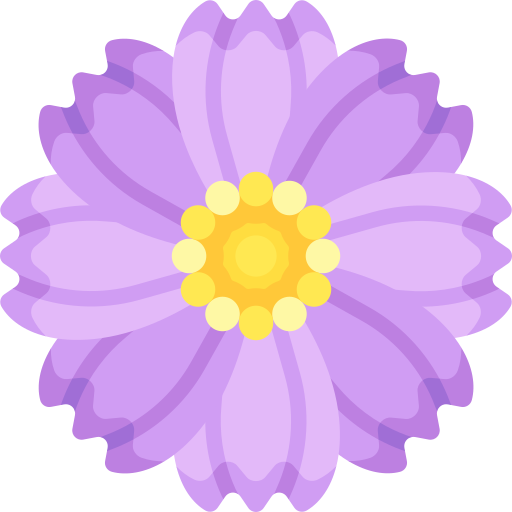
Flower Color

Growth Rate
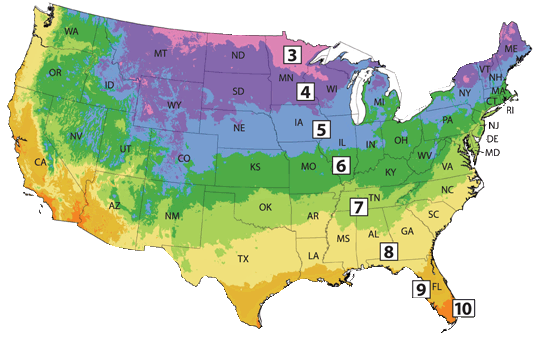
Hardiness Zone
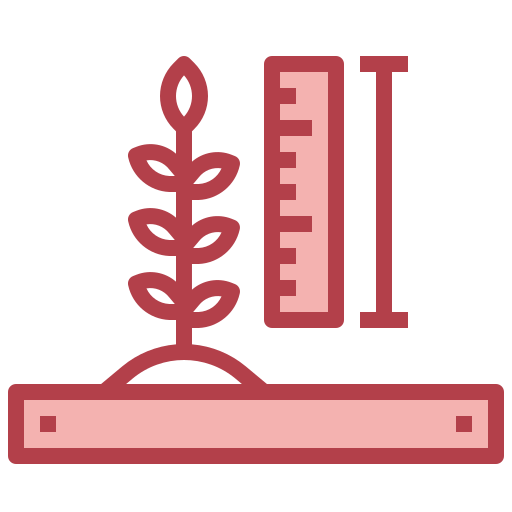
Mature Size
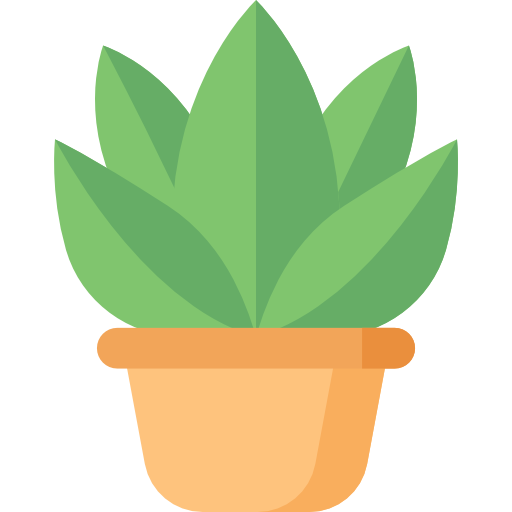
Plant Type


Sun Exposure

Toxicity

Watering Needs
How to Water Air Plants the Right Way
Like all houseplants, air plants need a careful watering schedule to grow and produce fuller leaves and blooms.
If you overwater your air plants, they will succumb to fungus rot and fall apart.
Underwatering will lead to foliage curling and a wrinkly appearance.Therefore, a careful watering schedule is essential for their proper care and maintenance.
When growing air plants indoors as houseplants, water them once a week.
After watering by either the soaking or misting technique that you will learn about below, be sure to gently shake the plant to remove excess water to prevent rotting or fungal infections.

Try and water your air plants in the morning so the moisture can dry off throughout the day. For mesic air plants, water them twice to thrice a week, and apply more water as needed to achieve the best growth and flowering.
Pro Tip
Do not use chlorinated water when watering your air plants, as it can harm their leaves. Instead, use rainwater, pond water, or distilled water.
How Often to Water Air Plants
You should water your air plants weekly throughout the year. However, the watering schedule may vary slightly depending on the type (xeric and mesic air plants).
- Xeric air plants need less frequent water applications, so the misting watering technique is ideal.
- On the other hand, mesic air plants need more frequent watering because they are native to South American rainforests. Therefore, water them through soaking or misting techniques. Soak them once a week or mist them twice a week during hot summer days.
To determine the watering needs of your air plants you need to examine their leaves closely. If the foliage becomes dry and crispy, and the leaf edges curl up inward, it means the plant needs watering.
The Top 2 Air Plant Watering Techniques That You Should Know
1. Soaking
Various web sources say 20 to 30 minutes of soaking is the best way to water air plants, but here at Planet Desert, we have found that it is too long. If you choose to use the soak method, 5-10 minutes is more than enough. In this method, you can submerge the plants in non-chlorinated water, which is beneficial for both mesic and xeric air plants.
- Fill a sink or container with high-quality filtered water deep enough to submerge the air plant.
- Then, place your air plant face down in the container and let it soak for 5 to 10 minutes.
- After soaking, shake the air plant gently to remove excess water so the excess moisture does not accumulate at the bottom of the plant.
However, this is not our preferred method as it does have the hassle of removing the plant from its holder or the pain of soaking the plant with the entire holder. This method is also time-consuming, and if using tap water you need to let the water sit for a couple of hours for the chlorine to evaporate.

2. Misting
Our favorite and easiest method to water your air plants is misting. This watering technique is helpful for both types (mesic and xeric air plants) during hot summer days. Furthermore, this watering method is much easier and does not involve the struggle of removing the plant from its holder. This method is also not time-consuming.
Here’s How to Mist Air Plants:
- Fill a spray bottle or mister with rainwater, pond water or bottled water (that has some minerals) to start misting.
- When misting your air plants, hold the spray bottle 6 to 12 inches away from the plant. Spray the water onto the leaves to thoroughly wet them.
- After misting, wait a few minutes or two to let the plant absorb water, then gently shake the plant to remove excess water. Be careful not to damage the delicate leaves of plants during drying.
Misting is also helpful when you notice the leaves of your air plants looking a little dry in drier climates with little humidity. This technique is also helpful for air plants when mounted on objects or blooming. So, regularly misting these blooming air plants will prevent them from rotting. For this, mist the leaves without wetting the flower inflorescence.
Valuable Tips for Watering Your Air Plants
- Do not use distilled water because the lack of nutrients will cause the plant to suffer or die.
- Always use high-quality filtered water. Pond or aquarium water can also be used to water air plants for its added nutrients. Avoid using tap water that is high in chlorine. If you use tap water, allow it to sit out for a few hours to help the chlorine dissipate.
- Constantly water your air plants in the morning because they use CAM photosynthesis and respiration at night. So, the rapid drying of leaves will allow this process to happen quickly.
- Gently shake the air plants after soaking to remove the excess water, especially for Xerographica species.
Is My Air Plant Getting Enough Water?
While air plants grow without soil, they need regular watering with enough air circulation. To check your air plant's water needs, look closely at the leaves to observe signs of underwatering and overwatering.
Signs of Overwatering
Too much watering of your air plant leads to browning or softening of leaves and rotting of the entire plant as the water drops accumulate in the plant base, causing suffocation and poor air circulation. This results in attracting fungal pathogens and other bugs.
Signs of Underwatering
Air plant leaves turn brown or crispy due to underwatering, while leaves' concave shape becomes larger.
How Much Light Do Air Plants Need?

Air plants (Tillandsia spp.) are happiest when grown in bright, filtered sunlight daily from April to October.
They need 2 to 4 hours of bright, indirect light daily for the best growth and development.
Avoid prolonged exposure to direct sun, as it will lead to foliage drying and burning.
When growing air plants indoors, situate them in brightly lit places where they receive partial sunlight for 4-6 hours daily.
On the other hand, when Tillandsia air plants are grown outdoors, they prefer to grow in part-shade with protection from late-day sun.
These plants can also grow in artificial grow lights. For this, using full-spectrum (fluorescent) light is a must-have. The quality of these light sources enables Tillandsia to photosynthesize properly and produce new leaves.
Don’t Use Soil with Air Plants
Air plants do not need soil to grow and reproduce because they have aerial roots that collect nutrients from the air and absorb water through trichomes. They also use their aerial roots to hold on to other support structures or tree branches without harming them. On the other hand, if you try to grow them in soil, they will most likely die.

Temperature and Humidity
Air plants grow best in warm temperatures and highly humid environments. So, maintain the indoor temperatures around 60-90 degrees Fahrenheit with humidity above 60 percent. Use misting or place the plants near a pebble tray filled with water to maintain optimum humidity levels during warm, dry days.
Air plants are hardy in USDA hardiness zones 9 to 13 and can be grown outdoors all year round. However, if you live in USDA hardiness zones below 8, you must bring them indoors when nighttime temperatures fall below 40 degrees Fahrenheit. So, the ideal temperature air plants grow best in is warm with adequate humidity.
How to Display Air Plants
Tillandsia can be displayed creatively to bring drama and greenery to indoor spaces as they can cling and stick to almost anything.
- They can be placed in terrariums or attached to driftwood to create a unique display. Based on their similar growth conditions, they also make great companions on a branch with orchids.
- You can also display air plants in decorative glass capsules. Place them, especially mesic air plants, inside the glass capsules along with rocks and suspend them from ceilings to enhance indoor aesthetics.
Pro Tip
Do not place xeric plants in terrariums because they need drier conditions and will not survive in highly humid environments.
Where are the Best Places to Put Air Plants
The best indoor locations for these plants are sunny bathrooms or kitchen windows, but not windows that get more than an hour or two of direct sun. Bathrooms and kitchens are best as there is more steam and moisture that will increase the humidity in the room and will assist the plant in optimal growth and development.

Fertilizer
Air plants do not need heavy fertilizer applications. However, feeding them with an NPK-balanced ratio liquid fertilizer will benefit the plant. So, feed the air plants with a fertilizer specially formulated for epiphytes or bromeliads once a year in the spring. These fertilizer applications encourage blooming in air plants and, after blooming, the production of ‘pups’ or small offsets from the mother plant. Add these fertilizers to the water you use for misting or soaking in because they contain absorbable nitrogen.
Pruning
Tillandsia do not need pruning because they constantly shed their older dead leaves and aerial roots as new growth comes in.
When it comes to pruning these unique plants, the main goal is to remove any dead or dried-up leaves. This helps in preventing rot and allows the plant to focus its energy on producing new, healthy leaves.
To prune your air plant, gently remove any brown or wilted leaves by pulling them off from the base of the plant. It's important to use clean and sharp scissors or shears to avoid damaging the plant.
Additionally, if you notice any pups (baby air plants) growing on the parent plant, you can carefully separate them once they reach about one-third to half the size of the parent plant.

Remember, remove the yellow leaves and old, spent flowers to promote new development, as the older leaves can retain moisture after watering and can cause rotting.
Our Top 10 Favorite Varieties of Air Plants
There are hundreds of varieties of Tillandsia, each with its own unique leaf shapes and vibrant flowers that add beauty and color to any space. The following Air Plants are our favorite types of air plants (Tillandsia spp.):

1
Tillandsia bulbosa
BUY AT PLANET DESERTkeypoints:
- USDA Hardiness Zones: 9, 10, 11, 12
- Growth Rate: Slow
- Blooming Period: Spring, Summer
- Native Area: Mexico, Central America, Brazil
Tillandsia bulbosa is a unique-looking mesic air plant with a bulbous shape and tendril-like leaves. It blooms in spring and summer, producing vibrant, deep violet, red, or plum flowers. As a mesic tropical plant, it can tolerate higher humidity and lower airflow. It can also survive less-than-perfect growing conditions and displays the happiest growth in warm temperatures and high humidity levels. Learn more
Pro Tip
When watering your Tillandsia air plant, do not submerge it in water or keep it wet for too long. Otherwise, water drops trapped in trichomes for too long will lead to poor transpiration or breathing. To keep this air plant healthy, water sparingly, like misting every 1-3 weeks, is ideal. Another care tip is to provide this air plant species with more light than other Tillandsia spp because it reflects more sunlight than absorption

2
Tillandsia Caput-medusae
BUY AT PLANET DESERTkeypoints:
- USDA Hardiness Zones: 9, 10, 11, 12
- Growth Rate: Slow
- Blooming Period: Spring, Summer
- Native Area: Central America, Mexico
Tillandsia Capcut-medusae is an easy-going houseplant with snake-shaped leaves that bring an exotic flair to indoor and outdoor spaces. The leaves are grey-green, and tiny trichomes cover the plant base.This xeric air plant is perfect for novice plant parents because of its easy-going growth habit. It needs watering once a week with bright sunlight and moderate to high humidity levels during the summers. Learn more

3
Tillandsia ionantha ‘Conehead’
keypoints:
- USDA Hardiness Zones: 9, 10
- Growth Rate: Slow
- Blooming Period: Spring, Summer
- Native Area: Central, South America
Tillandsia ionantha ‘Conehead’ is a stunning xeric air plant that forms a small clumping rosette of thick leaves that turn reddish pink during maturity. This cultivar produces violet flowers during spring and summer, which attract pollinators and hummingbirds.

4
Tillandsia ionantha ‘Rubra’
BUY AT PLANET DESERTkeypoints:
- USDA Hardiness Zones: 9, 10, 11
- Growth Rate: Slow
- Blooming Period: Spring, Summer
- Native Area: Central, South America
Tillandsia ionantha ‘Rubra’ is an eye-catching xeric air plant with narrow and densely packed bright green leaves with silvery scales, especially towards the base. These stunning bright green leaves turn bright red when the plant is flowering. It produces tubular, purple flowers with yellow stamens emerging from white bracts. Learn more...

5
Tillandsia Xerographica
BUY AT PLANET DESERTkeypoints:
- USDA Hardiness Zones: 9, 10, 11
- Growth Rate: Slow
- Blooming Period: Spring, Summer
- Native Area: Mexico, Honduras, Guatemala, El Salvador
Tillandsia Xerographica is a stunning xeric air plant with mossy green leaves that curl or spiral at the tips, thus giving this plant a distinct appearance. This plant reaches a mature height of 3 feet tall among other bromeliad members.Like all air plants, Xerographica is low maintenance and easy to grow. This plant needs bright sunlight and optimum fertilizer applications with regular weekly misting. Learn more
Pro Tip
When watering the Xerographica air plants, check the leaves to see if they need water. For example, the leaves will curl tightly when they need more water, and if they are wrinkled, the plant is dehydrated. If the leaves are very straight, then the plant is overwatered.

6
Tillandsia butzii
keypoints:
- USDA Hardiness Zones: 10, 11, 12
- Growth Rate: Slow
- Blooming Period: Spring, Summer
- Native Area: Central America, southern Mexico to Panama
Tillandsia butzii, a stunning mesic air plant with a bulbous base, is native to rainforests in Central and South America. This plant looks more spectacular once it reaches its mature size because of its leaves. It has wispy tentacle-like leaves with light green spots and small yellow flowers that emerge from a red inflorescence. Taking care of this air plant is easy. It prefers bright sunlight and a thorough watering schedule once a week during spring and summer. Ensure to vigorously shake the plant after every wash to remove excess moisture; otherwise, it will succumb to base rotting due to fungal and bacterial infections.

7
Tillandsia aeranthos
keypoints:
- USDA Hardiness Zones: 10, 11, 12, 13
- Growth Rate: Slow
- Blooming Period: Late Spring, Early Summer
- Native Area: Argentina, Brazil, Paraguay, Uruguay
Tillandsia aeranthos is an evergreen houseplant that forms a rosette of greyish-green leaves that appear narrowly triangular. It produces dark blue flowers in spring and summer that emerge from pink bracts. This xeric air plant grows best in bright sunlight with a thorough soaking every two to three weeks. So, give this plant a nice shower every other week for fuller growth and blooms. Also, provide this plant with proper air circulation and bright but partial sunlight for healthy blooms.

8
Tillandsia streptophylla
BUY AT PLANET DESERTkeypoints:
- USDA Hardiness Zones: 9, 10, 11
- Growth Rate: Fast
- Blooming Period: Mid winter, Mid summer
- Native Area: Mexico
Tillandsia streptophylla (also known as curly plant, “Linguine” plant, and “Shirley Temple”) is a fast-growing air plant among other species and varieties of air plants. It grows to a mature size of 8 inches and produces a pink inflorescence frosted with trichomes. The name of this plant is derived from the Greek words “streptos” and “phyllon.” Streptophyllon means “with twisted leaves,” which is suitable for this plant. This xeric air plant is easy to care for and grows under less-than-perfect conditions. When kept outdoors, it attracts pollinators and hummingbirds with its vibrant pink flowers. Learn more
Pro Tip
Tillandsia streptophylla has a round, fat, and bulbous base with curved sheaths, which makes it more prone to rot. Therefore, shake the plant gently after watering to remove excess moisture. Place the plant in full sun for fuller growth and blooms.

9
Tillandsia usneoides
BUY AT PLANET DESERTkeypoints:
- USDA Hardiness Zones: 8, 9, 10, 11
- Growth Rate: Slow
- Blooming Period: Spring, Summer
- Native Area: Southeastern United States, Tropical America
This xeric air plant species has the most unique appearance of all. It has long, slender, wiry branching stems that grow as bluish-grey streamers and garlands draping among tree branches. These silvery trailing strands make Spanish moss the most attractive and chain-like display.Tillandsia tectorum, its thin stems and leaves are covered with scales or trichomes that trap nutrients and dust particles and absorb water. It produces blue or pale green flowers with three petals. These flowers bloom for three to four months, from summer to fall, and produce interesting-looking seeds with hairy sails. The seeds disperse through winds and stick to other tree branches. Learn more

10
Tillandsia Tectorum
BUY AT PLANET DESERTkeypoints:
- USDA Hardiness Zones: 10, 11
- Growth Rate: Slow
- Blooming Period: Spring
- Native Area: Ecuador, Peru
Tillandsia tectorum is a widely loved plant among air plants for its distinct appearance. Its foliage has visually appealing silvery trichomes that reflect sunlight and keep the plant cooler. In addition to protection from harsh sun rays, the trichomes also serve another purpose: catching nutrients from the wind. These large silvery trichomes are also helpful during the heavy rainy season. They can dry themselves off quickly by catching wind; otherwise, the epidermis under the trichomes will turn black due to oversaturation for too long.
This xeric air plant grows in arid regions of Peru and Ecuador near cacti and agave with full sunlight. That’s why this plant adapts to having large trichomes on its leaves. Tillandsia tectorum grows in various climates and conditions, leading to different plant growth sizes. For example, some plants grow to a mature length of 3 to 4 inches tall, while others grow to one foot tall. Learn more
Top Five Air Plant Care Tips
The top five air plant care tips are:
- Provide proper air circulation to air plants to avoid rotting leaves and wilting due to poor aeration.
- Water your air plants regularly during the summer months to avoid the drying and wilting of leaves. After watering, gently shake the air plants to remove excess water content.
- Maintain a highly humid environment with warm temperatures for air plants.
- Place the air plants in bright sunlight for ideal growth and development.
- Fertilize the plant with bromeliad fertilizers during the active growth season to induce blooming.
Air Plant Blooming Cycle
Air plants bloom only once in their lifetime, and the flowers can last from days to months, depending upon various species. Interestingly, each variety of air plants will feature different kinds of flowers. Some produce only single-stem flowers, while others produce bright tropical influences with many tubular blooms. During the blooming cycle, air plants need extra care and maintenance.
Here are a few tips on how to get your air plant to bloom:
- Air plants bloom once in their lifetime, but you do not lose the plant because it produces small offsets or ‘pups’ from the mother plant that transforms into new plants.
- Make sure your air plant is mature and healthy, then blooming will occur at the right time.
- Ensure the plant has enough indirect sunlight and is well-watered and well-fed with bromeliad fertilizer. Proper fertilization is the most crucial step in giving your air plants an extra boost of growth and maturity. However, be aware to keep it manageable and remain with monthly fertilizer application.
- If you notice your air plant foliage is changing to bright pink or red, it is a sign the plant is starting its blooming cycle, known as ‘blushing.’ At this stage, provide your plant with adequate watering, indirect sunlight, good air circulation, and fertilizer to get fuller blooms.

Considerations For Air Plants After It Blooms
- Once your air plant has completed its blooming cycle, tiny growths emerge from the base of the plants. This process is known as clumping, and these tiny growths are called “offsets” or “pups.”
- These offsets grow from the base of the parent plant and form a cluster of interconnected plants.
- Allow the plant to grow new offshoots or pups by deadheading spent flowers and removing older leaves.
- Once the pups are about one-third the size of the parent plant, separate them to grow into a new plant on their own or leave them attached to the form clump.
- As the pups grow, the parent plant will die off, while pups will continue to grow and follow a life cycle of maturity, blooming, and clumping.
How to Propagate Air Plants
Just like their care and maintenance, air plants are easy to propagate. They propagate more rapidly through pups (also known as offsets). These pups are the smaller version of the parent plant and emerge from the bulbous base of the plant and develop their aerial root system.

- To propagate the air plant through pups:
- Simply twist the pup until it detaches from its parent plant. Do not use scissors or cutting tools to remove the pup, as it can cause damage.
- Once the pup has been detached from the parent plant, place it on a new support structure or driftwood until it develops its root system.
- To ensure proper growth, place the driftwood in bright, indirect sunlight and regularly water your baby air plants.
- Avoid overwatering the pups, as they are more susceptible to rot than mature air plants. Monitor the growth of the pups and adjust care as needed to promote healthy development.
Air Plant Care in Winter
During winter, air plants (Tillandsia spp.) do not need special care requirements except for warm temperatures and high humidity levels. So, maintain the temperatures around 50-90 degrees Fahrenheit and situate them in a well-lit area of your home (south-facing window is ideal). Also, make sure to water them weekly to keep them hydrated.
In colder months, there is low to zero humidity in the air due to heaters, which might lead to wrinkly leaves. So, water them every week and mist them with rainwater frequently. Also, proper air circulation must be maintained so the plant can dry quickly between watering sessions.
If you are a grower living in a USDA hardiness zone below 9 or warmer, you can grow your air plants outdoors all year. However, keep them hydrated through misting and maintain proper air circulation. Also, if you live in USDA hardiness zone 8 or below, bring the plants indoors in winter to avoid freezing-temperature damage.
Avoid placing them near heaters and cold windows because the hot and cold air can shock your plants and may impact the blooming for the coming spring and summer seasons.
Other Winter Care Considerations
- Keep the air plants away from the heaters and embers of fireplaces.
- Maintain good air circulation in your indoor spaces during winter, too, because your air plants need good air circulation to dry after watering.
How to Mount an Air Plant?
There are many ways to mount air plants to bring drama and aesthetics to indoor spaces. Because they do not need soil, they can easily be attached to any material, such as wreaths, wire, driftwood, and shells.Here are a few of our favorite methods to mount an air plant:

Wire: This is the easiest and preferred method to mount an air plant.
When using wire to display the air plant, loop it through the bottom part of your plant's leaves and wrap it around the base a few more times.
Fishing Line: Another easy way is to use a fishing line to mount an air plant on a wreath or driftwood.
Use the same methods as wire mounting, like weaving the fishing line around the air plant base, tying it to a mounting object, and securing the end with a knot.
Make sure to choose a fishing line that is strong enough to hold the weight of the air plant. Additionally, consider using a clear fishing line for a more discreet look.
Do not use copper wire to mount an air plant, as it is toxic to the plant.
Common Pests and Diseases of Air Plants
Air plants are low-maintenance, evergreen members of the bromeliad family that remain pest-free when provided with suitable care and growing conditions. However, these hardy perennials give in to various pests and problems under poor growth conditions.
The most common pests and diseases of air plants are given below:
1. Fungus Rot
The rotting of air plant foliage occurs due to overwatering and poor air circulation. It leads to the decay of leaves, stems, and aerial roots, thus turning the entire plant black.
- Signs and Symptoms: Foliage turns yellow with black mold or Defoliation occurs from the plant base with no signs of survival and producing new leaves
- Treatment: The best way to prevent air plants from fungus rot is to spray them with cinnamon dilutions. Cinnamon acts as a fungicide and inhibits mycelial growth after a few applications. Another best way to avoid fungus infection is to prune the infected or diseased leaves and subsequently reduce the water schedule.
2. Mealybugs
These sap-sucking pests are also a nuisance for houseplant enthusiasts. Mealybugs suck sap from plant tissues through their piercing-sucking mouthparts and produce honeydews on infested plant parts. The honeydew secretions attract ants and other pests (fungus gnats), making it difficult for plants to absorb environmental nutrients.
- Signs and Symptoms: Plant begins wilting and defoliation.
- Treatment: To protect air plants from mealybugs, spray them with neem oil solutions every two weeks. These neem oil applications will kill the eggs and larvae of mealybugs while protecting them from future infections.
3. Scale Insects
Scale insects also infest the air plants when grown and maintained in highly humid environments. These bugs appear as tiny bumps or shells.
- Signs and Symptoms: Scale insects cause the leaves distortion and yellowing
- Treatment: To stop scale insect infestations, insecticidal soap, and horticultural oil sprays are applied weekly. Also, quarantine the infested air plants from other houseplants and soak them in a diluted insecticidal soap solution to remove and kill as many scale insects as possible.

Where to Buy Air Plants Online?
You can buy these beginner-friendly Air plants from Planet Desert, bringing vibrancy to your indoor and outdoor spaces. When buying these beauties from any online store, make sure to check that you are checking these the following important aspects. Here at Planet Desert we make sure the air plant you receive meets the following criteria:
- Always select healthy plants with vibrant-looking leaves
- Select a plant with lush green leaves
- Avoid plants with pest infestations, wilted and yellow leaves
- Make sure the plants have no visible signs of nutrient deficiency
Air Plant Quick Growing Reference Guide
| Bloom Season | Once in their life cycle |
|---|---|
| Botanical Name | Tillandsia spp. |
| Common Name | Air plant |
| Dormancy | Winters |
| Family | Bromeliaceae |
| Flower Color | Bright pink, purple, bright red, white yellow |
| Genus | Tillandsia |
| Growth Habit | Compact rosette, Vine-like, Elongated |
| Growth Rate | Slow |
| USDA Zones | 9, 10, 11, 12, 13 |
| Mature Size | 2-12 inches tall (indoors), 5-7 feet tall (outdoors) |
| Native Area | Mexico, Guatemala, El Salvador, Honduras |
| Plant Type | Epiphytes, Houseplants |
| Propagation | Division |
| Resistance | Deer resistance, drought resistance, pest resistance, heat tolerance |
| Soil PH | 6.5, Acidic, Neutral |
| Soil Type | Well-drained specialized soil |
| Special Features | Epiphytic growth habit, blooms once in lifetime |
| Sunlight | Full sun, partial shade |
| Toxicity | Friendly to humans, friendly to cats, friendly to dogs |
| Watering Needs | Low |
Final Thoughts
Overall, Tillandsia air plants bring joy and beauty to indoor spaces with their unique-looking leaves and vibrant flowers. They also purify the air and have many health benefits for plant enthusiasts. One such plant is air plants (Tillandsia spp.). These are evergreen tropical plants of the Bromeliaceae family that grow without soil and absorb nutrients from the environment. They are low-maintenance and perfect for beginner gardeners.
With their uniquely shaped leaves, air plants elevate the aesthetics of any space while attracting pollinators to gardens. With proper care and maintenance, air plants can survive and thrive for years.
Frequently Asked Questions
-
How to Take Care of Air Plants Indoors?
Air plants are the best indoor houseplants because of their no-fuss growth habit. They add beauty and color to indoor spaces while keeping the air clean and toxins-free. With their low-maintenance lifestyle, Tillandsia spp. are also the best houseplants for novice gardeners.
-
Do Air Plants Need Fertilizer?
Air plants do not need heavy fertilizer applications. However, an occasional application of water-soluble fertilizer formulated for air plants or epiphytes is ideal for their optimum growth. Make sure the formulation of the fertilizer is 5-10-5 or nitrogen-phosphorus-potassium.
-
How to Water Air Plants in Winters?
During winter, mist your air plants once or twice weekly to keep the foliage hydrated. If soaking them,5 minutes is more than enough; other sites say 20 minutes, but this is too long.
-
What are the 3 Ways to Display Air Plants?
The three best ways to display air plants are tabletop terrariums or desktop planters, hanging planters, and terrariums.
-
Do Air Plants Need to be Attached?
Air plants are epiphytes, and their aerial roots anchor them to different trees or objects in their natural environment. They like to attach onto some type of support structures (such as driftwood) for proper growth indoors or outdoors. However, if you put them in some type of air plant holder that supports them, then they do not need be attached as the holder will support them.













